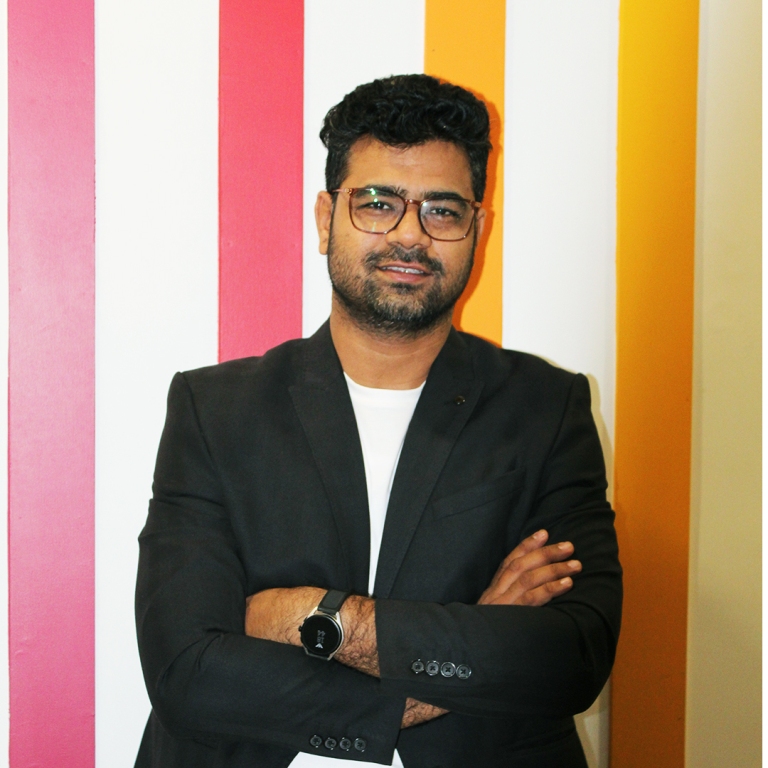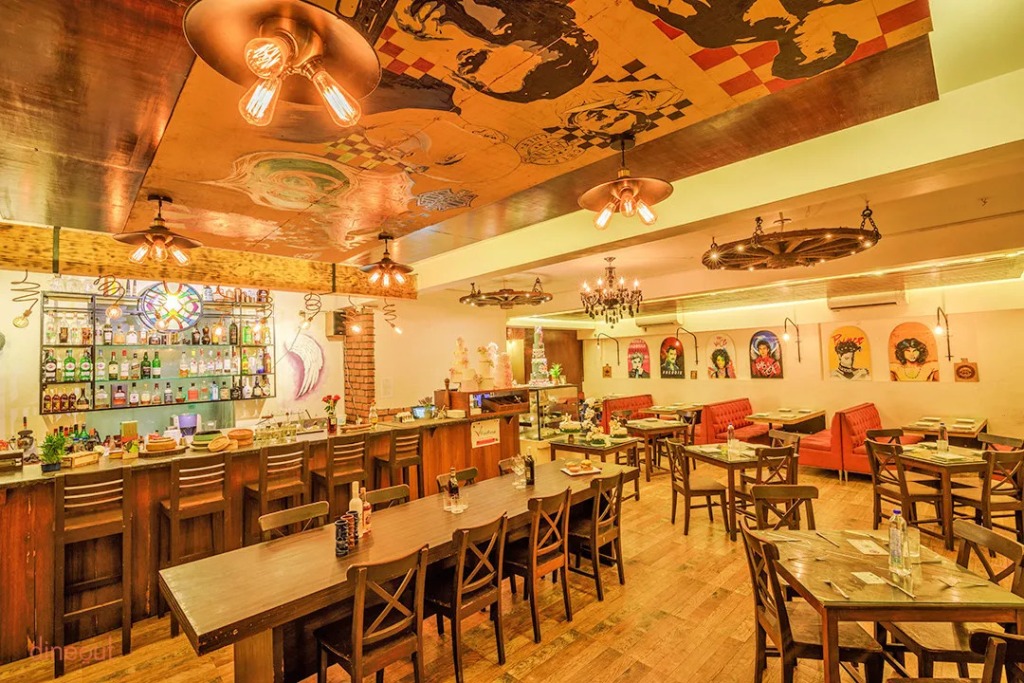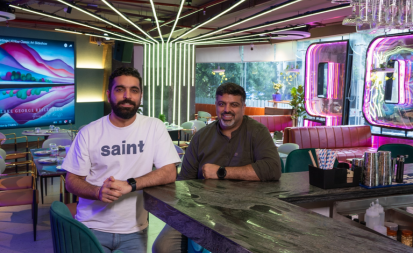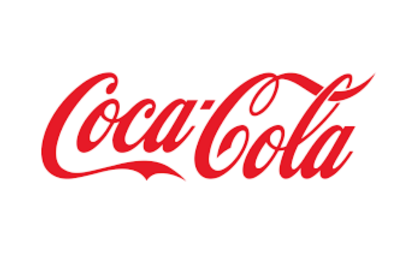The Wine Industry is Growing Rapidly and is Seeing One of the Best Times in the Indian Market
Industry experts sharing insights on factors behind the growth of wine tourism in India, placement and demand of wine in hotels, and how wine plays an essential role in customer experience. Please find the viewpoints

Industry experts sharing insights on factors behind the growth of wine tourism in India, placement and demand of wine in hotels, and how wine plays an essential role in customer experience. Please find the viewpoints below

Ishaan Bahl
FOUNDER, 145 CAFE & BAR
Major factors behind the growth of Wine tourism in India
Earlier wines were consumed only by people who were well travelled and drank wines out of India. Now, because of wine seminars and easy drinking wines that are imported, more and more people find it easy to accept wines.
How has the placement / demand of wine in Hotels changed over time?
Food and wine pairings and experiential service has helped restaurants to sell more wines. Knowledge of old world and new world wines has helped restaurants to select wines that suit their guests.
Wine has become an essential part of the menu in today’s dining experience. What are the key factors in managing and serving the diners’ wine options?
Listing wines that go well with the menu items make it easier for restaurants to sell wines to their guests. Also, training the staff members about the wines that are listed is crucial in the sale of wines at restaurants.
According to you, how has the wine industry evolved over time in terms of supply as well as customer demand? How has it been impactful for your brand?
More wines are imported now as compared to a few years ago. Since people are aware and have gained knowledge about the wines and how to choose and drink them, there has been an increase in demand for wine varieties resulting in more import of better quality wines. Same goes for the domestic wineries, they have started hiring wine experts to spread awareness about their brands and the winery tours help a lot in spreading awareness.
How is wine at your brand (Hotel, restaurant or airline) playing an essential role in customer experience?
At 145 Cafe & Bar, there’s a set customer base for wines, which makes it easier for us to choose what grape varieties to keep and which brands to list on the menu. Also, we have a big number of guests that drink Sangria. So using a good quality wine for our Sangria is very important. Since the wineries are pushing themselves on making better quality wines, we get good options to choose from.
Pulkit Arora
Director, CYK Hospitalities
Major factors behind the growth of Wine tourism in India.
Wine tourism in India is booming thanks to several factors. Beautiful vineyards in places like Nashik, Maharashtra, and Karnataka have become popular destinations for relaxation and culture. More people are interested in learning about wine and enjoying food, which has driven this growth. Travelers want to visit wineries, taste different wines, and join wine-related events. Indian wines gaining global recognition has also sparked international interest, making wine tourism in India a growing trend.
How has the placement/ demand of wine in Hotels changed over time?
Over time, hotels have changed how they approach wine in the hospitality industry. They used to have limited wine options, but now they offer a wide variety of wines to meet the preferences of their guests. People now expect a diverse wine selection when dining at hotels, making it a crucial part of their overall experience. To meet this demand, hotels are hiring sommeliers and providing wine education to enhance guest satisfaction. This shift highlights the growing importance of wine in the hospitality sector.
Wine has become an essential part of the menu in today’s dining experience. What are the key factors in managing and serving the diners’ wine options?
In modern dining, managing wine options involves several important elements.
-A knowledgeable sommelier is crucial for understanding wines. The kitchen and wine cellar must work together for great food and wine pairings.
-Controlling temperature, using the right glasses, and decanting wine properly is essential.
-Educating diners about wine enhances their dining experience.
The key is to strike a balance between choice and guidance, allowing customers to explore while also offering expert recommendations to ensure a perfect match with their food.
According to you, how has the wine industry evolved over time in terms of supply as well as customer demand?
The wine industry has undergone a significant transformation in response to changing consumer preferences. Originally modest, it has matured into a dynamic sector with a rich assortment of domestic and international choices. Today’s customers demand diversity, quality, and authenticity, prompting winemakers to expand their offerings, experiment with grape varieties, and adopt sustainable practices. This evolution reflects the industry’s dedication to continuous improvement, driven by evolving consumer tastes.
How is wine playing an essential role in customer experience?
Wine has evolved beyond just a drink. It now plays a vital role in enhancing the dining experience by connecting cultures and cuisines, elevating meals to a sensory adventure. It fosters a sense of togetherness among diners, adds luxury and sophistication, and creates a celebratory atmosphere. Wine pairing enhances the culinary journey, awakening the senses and leaving lasting memories. In essence, wine brings people together, turning a meal into a memorable symphony of flavors and sensations, making dining occasions truly special.


Pugdundee Safari
Major factors behind the growth of Wine tourism in India?
Better lifestyle, increase in disposable income & a relatively healthier choice has got a lot to contribute to the popularity of wine in India. The increasing product demand among young consumers can also be attributed to the emerging trend of socializing and partying, in urban and rural cities alike. Parallely, the popular international brands finding space on Indian shelves, has immensely boosted the growth.
How has the placement/ demand of wine in Hotels changed over time?
The guests who visit across our lodges are well travelled. They have experienced both national & international brands during their travel and immediately connect with us when they see their known brands on offer. This has on one hand eased our job but at the other hand, also requires us to become proactive and engage in research, to get well versed with the taste of our audience. Those who will not mind going that extra mile for their guests, will most definitely gain in the long run.
Wine has become an essential part of the menu in today’s dining experience. What are the key factors in managing and serving the diners’ wine options?
Wine has become a symbol of both status & style. As a result, the Indian wine sector has become one of the fastest growing alcoholic beverage categories in the past decade, thanks in particular to the rise of upper-middle class urban consumers. However, price remains the primary driver of wine choice for consumers followed by brand familiarity and country of origin. Pairing it with Indian food is a key factor for long term growth and stability.
According to you, how has the wine industry evolved over time in terms of supply as well as customer demand? How has it been impactful for your brand?
In the last few years supply of wine has increased tremendously, all big cities have different varieties of wines available from all across the globe and at a reasonable price. Indian wine is also more readily available and some of it is comparable to the best in the world. Challenge for us remains availability as we are located in remote areas.
How is wine at your brand (Hotel, restaurant or airline) playing an essential role in customer experience?
Our lodges host a mix of both domestic & international clientele. We are still struggling with variety & regular supply of wine as we are remotely located.
We are working with a few brands to ensure better availability in the areas we are situated in. As the majority of guests at our lodges are well travelled and safaris make for a hectic day, unwinding with a glass of wine is a great option.
Sandeep Namboodiry
Chef Patron at Mesa
1. Major factors behind the growth of Wine tourism in India?
One is the increased production units in India. Over the last couple of decades, India has seen a notable increase in wine production in regions like Nashik in Maharashtra, Karnataka, and Himachal Pradesh. This growth in production has led to a greater interest in wine tourism as people want to explore local wineries and vineyards. Also changing consumer preferences towards more premium and sophisticated beverages, including wine has seen a major shift in the past two decades. This growing interest in wine has spurred wine tourism as people seek to learn more about wine culture and production. The Indian government has been supportive of the wine industry’s growth, which includes promoting wine tourism. Various states have implemented policies and regulations to facilitate the establishment of wineries and vineyards, making it easier for tourists to visit and learn about wine production. Wineries in India are offering unique experiences to attract tourists. These can include wine-tasting sessions, vineyard tours, and even wine and food pairings. The novelty of these experiences adds to the appeal of wine tourism. Wine festivals, events, and promotions have been on the rise in India. As more people discover the charm of Indian wineries and vineyards, this trend is likely to continue to grow.
How has the placement/ demand of wine in Hotels changed over time?
The placement and demand for wine in hotels have evolved significantly over time, reflecting changing consumer preferences, global wine trends, and the efforts of the hospitality industry to cater to these shifts. Hotels have expanded their wine lists to offer a wider range of wines, including selections from different regions and countries, from affordable house wines to premium and rare selections. Many hotels now emphasize local and regional wines to showcase the unique flavours and characteristics of the area. Some hotels offer wine education programs, including tastings, classes, and seminars, to educate guests about wine. Technology integration such as digital wine lists or tablets at tables provides detailed information about wine selections, including tasting notes and food pairing suggestions. Hotels are continuously adapting their offerings and approaches to cater to the changing landscape of the wine industry and consumer tastes. As a result, wine has become an integral part of the overall guest experience in many hotels around the country.
Wine has become an essential part of the menu in today’s dining experience. What are the key factors in managing and serving the diners’ wine options?
Wine has always been a beverage to accompany a meal, rather than just an aperitif or digestif. Flavours of food are known to awaken certain notes and flavours in wines, which is where the art of pairing comes in. While a general guideline is to match flavours from the region where the grapes were cultivated, individuals have gradually embraced experimentation, creating even more intriguing combinations to enhance the dining experience To someone who really understands the complex flavours of wine, picking the right combination is always an exciting part of their evening. However, for those still navigating the complexities of wine, a knowledgeable and well-traveled sommelier becomes indispensable. They play a pivotal role in helping diners grasp how wine can elevate their meal and maximize the potential of the flavours inherent in any exceptional wine.
According to you, how has the wine industry evolved over time in terms of supply as well as customer demand? How has it been impactful for your brand?
Over the years, several key factors have significantly expanded the opportunities for higher customer demand for wine. First and foremost, the surge in tourism across Europe, South America, and other wine-producing regions has played a pivotal role. Things that start off as a trend, like visiting vineyards, actually pick up and increase the knowledge base available for the customers, which automatically improves their standards and expectations from restaurants back in their hometown. The other thing is that wines are now being manufactured in parts of India and good, crisp wines, at that! This brings down the cost of a good bottle of wine and makes it much more accessible to a wider range of people.
5. How is wine at your brand (Hotel, restaurant or airline) playing an essential role in customer experience?
Mesa in Aerocity, a trailblazing restaurant known for offering an extensive selection of wines by the glass, has garnered significant attention among wine enthusiasts in New Delhi. We are currently in the early stages of planning a new branch in New Delhi, where we are confident that our customer base will embrace and value this innovative wine concept.Our wine-preserving machines employ advanced technology, utilizing nitrogen to flush and seal open wine bottles. This process effectively safeguards the quality of the wine for an extended period of 3-4 weeks after opening. This is particularly crucial because oxidation is the swiftest path to spoiling an opened bottle of wine. For this reason, even some of the best restaurants in Delhi cannot afford to sell some wines by glass due to the scarcity of demand, which leads to that bottle, unfortunately, going to waste. This machine or “Wine ATM” (as it also dispenses wine directly from the bottle without needing to be in contact with air at all) is for those who enjoy sipping a glass of fine wine over some fabulous food and not worrying about overspending for the entire bottle. We aspire to promote the culture of savoring wine alongside cuisine, and as our patrons become increasingly appreciative of the pleasures of fine wine, we eagerly anticipate welcoming them with open arms to provide this enriching experience and beyond.


Xav Norr
chef and Owner, Route 66
Major factors behind the growth of Wine tourism in India?
Wine tourism in India has seen a sudden surge in India simply because of its satisfying nature. Wine tourism is seen to be an experience that is not just relaxing but also an educational enriching experience for tourists. The growth of Wine tourism has several factors backing it, such as scenic vineyards, international recognition, boom in culinary tourism and changing consumer prefrences.
How has the placement/ demand of wine in Hotels changed over time?
In a post covid world, the demand for wine in hotels and restaurants has significantly increased over time. In the present day we see guests show an interest in wine events such as tastings alongside food and wine pairing workshops. Previously hotels and restaurants had a limited wine selection, but that has slowly changed too, presently restaurants look at stacking up the newest wines in the market alongside Vintage premium international wines.

Wine has become an essential part of the menu in today’s dining experience. What are the key factors in managing and serving the diners’ wine options?
For the most part, managing and serving a diner’s wine options can be quite tricky. It requires restaurants to have well trained staff who know the wine selection whilst understanding the diners tastes and preferences. At Route 66 Goa we make sure to have our wine selection routinely checked and refreshed if needed. We also take utmost care in wine presentation by making sure we use the right glassware for red, white and sparkling wine. Our glassware is cleaned and polished to make sure its free of any odors and residue. We keep in mind to serve our wines at the right temperature, while the staff takes utmost care in pouring, decanting and re-corking the wine of choice. We have also consciously chosen to serve wine by glass as a means of allowing customers to taste our selection based on their preferences, thus preventing wastage.

According to you, how has the wine industry evolved over time in terms of supply as well as customer demand? How has it been impactful for your brand?
The wine industry in 2023 has evolved in several ways. Wine brands these days pay close attention to aspects such as Diverse wine styles, global expansion, sustainable practices, and ofcourse, technology and innovation. Wine brands today are constantly advancing in viticulture and winemaking practices to improve wine consistency and quality.
In recent years, at Route 66, we have seen consumers choose brands based on reputation and brand marketing. We have seen a rise in sales for wine brands that have strong market presence, consumers today are beginning to choose more Indian Wines in comparison to before, this choice is solely based on flavour profiles and how well Indian wines compliment international cuisines too.
How is wine at your brand (Hotel, restaurant or airline) playing an essential role in customer experience?
Serving wine at Route 66 Goa, is more than just serving a beverage. It has become an integral part of the dining experience for the customer. A glass of wine adds depth and dimensions to meals while enhancing the dining experience. Since wine also compliments food greatly, this synergy can enrich a customer’s culinary experience too.
Naveen D’ Costa
Operations Manager, Raahi Neo Kitchen and Bar
Major factors behind the growth of Wine tourism in India
Wine tourism is a growing tourism although being in nascent stage compared to its overseas equivalents.
Wine Tourism what began as a niche type of tourism in Maharashtra has crossed borders into Karnataka with the outskirts of Bangalore and heritage site of Hampi becoming some new destinations for the budding wine market of India with various wine makers offering tour packages within their vineyards & wineries.
Factors that have impacted the growth of Wine Tourism in India can be summarised as below:
- Bargaining power of Suppliers: This encompasses a mix of both the domestic wine producers and the wine importers of the country. The aggressive marketing strategies by either segment in the trade ensures a healthy brand recall among consumer mindset.
- The domestic wine brands ensure “Competitive destination tourism” that factors in productivity levels of various tourist industry components enables a destination to supply tourists with tourism services and products with sufficient return on investment.
- Bargaining power of Buyers: Post Covid-19, the percentage of wine consumers and consumption has augmented as consumers were able to explore a wider selection of wine labels as retail/MRP was the only available choice during the pandemic lockdown. This encouraged the consumers to differentiate between the MRP and the absurdly priced restaurant or hotel pricing and access more offerings
- New competitors in the market: The ease of doing business in India and the understanding of the revenue generation in the Alco Bev space has encouraged many new entrants into the market with their own set of offerings or product mix.
- Lack of worthy substitutes: India is a consumer’s market and is extremely diverse. This makes it hard to cater to the mass with a single almighty product. Wine as a product has gained popularity in the last few years due to its low ABV. Also, awareness by wine enthusiasts in the market have communicated that it is an accessible drink to all and can be enjoyed for all occasions.
How has the placement/ demand of wine in hotels changed over time?
The dynamics of demands vs the offerings of wine in the HORECA (hotels, restaurants & cafes) have drastically transformed over the last decade.
Some factors that can be highlighted to understand the same are as below:
- Number of establishments opening in the market – According to Business Insider, the percentage of wine consumers makes up for 1% of total alcohol sales in India but is expected to grow at 10% CAGR by 2025
- Domestic wine makers are changing the game by introducing premium wines for an elevated identity at HORECA establishments.
- Consumers are becoming more knowledgeable on the basic understanding of wine as a product due to ease of accessibility because of various digital platforms.
- Today’s generation is open to exploring different spirits and do not believe in getting over-intoxicated. Consumers are willing to explore more provided they are offered more choices.
- Game of monetary benefit: It is unfortunate to see that even though the number of outlets opening in each city is skyrocketing, the wine offerings at these places are very generic or sub-standard. 80% of these new outlets have a repetitive wine menu.
- Quantity over Quality: Properties or outlets are focused on overall brand support in the form of monetary benefits or capital investments which has created an unhealthy monopoly in the market.
- Gamble of discount: A tug of war between brands who offer higher discounts on their product has blindsided owners/consultants of any establishment to favour one over the other thereby not making a better offering on the wine list
- Lack of interest in encouraging wine as higher source of revenue at an outlet level.
Wine has become an essential part of the menu in today’s dining experience. What are the key factors in managing and serving the diners’ wine options?
A successful wine program for any outlet elevates the dining experience for consumers.
A few factors that can really enhance the dining option for consumers are as below:
- Variety in selection of wines by country and grape varietals.
- Differentiate wine menu at each outlet rather than replication of labels.
- A healthy blend between domestic and imported wines.
- Honest pricing of wines in the menu.
- Encourage wine by the glass program.
- Adequate training for the service team to promote wine sales.
According to you, how has the wine industry evolved over time in terms of supply as well as customer demand? How has it been impactful for your brand?
The demand of wine as a product has increased over time with consumers wanting to explore more and more types of wines but there exists a dichotomy among consumers with regards to the price points that are quoted by the F&B establishments and an MRP store.
Among domestic wines, there is a preconceived notion among consumers (be it trade or retail) of the price of Indian wine due to the extremely aggressive and competitive pricing by domestic producers. However, this should not be the case. For any wine company, quality and sourcing plays a role in the final product which needs to be communicated and establishments need to be educated in the right manner to the consumers.
Nevertheless, to cater to this offering, the domestic brands have upped their game to produce wines that can be represented easily in the international wine market. Wine producers such as KRSMA estate and Vallone vineyards have understood the need to offer quality produce and at a favourable price point.
As far as the suppliers of imported wines are concerned, they are often faced with bigger issues both at the global level and local challenges.
- Issues of supply/shipment from the source vineyard.
- Post pandemic, the shipping and freight costs have shot up which indirectly gets passed on the cost of the wines being imported.
- Number of competitor importers in the country has shot up by 25-30%.
- The establishments are often blindsided to address the quality of the product due to an overall offering that benefits the establishment.
- The outlet does not wish to encourage a great wine program as it appears to be a difficult choice.
- Aggressive pricing by domestic brands in a price-sensitive market such as India
- The factor of steep discounts offered by companies/brands seem unjustified and often over shadows the need to have a great wine listings at the property.
How is wine at your brand (Hotel, restaurant, or airline) playing an essential role in customer experience?
We have a very careful selection of a wine list which is intended to pair with the modern progressive regional Indian Food that is served at Raahi. Hence Wine plays an essential role in customer experience in the form of elevating the food with the right pairing while complimenting the nuances and elements presented on the plate as well the most important factor, the taste of food.


Rahul Rohra,
Managing Partner, Rohra Hospitality LLP
Major factors behind the growth of Wine tourism in India
As the wine market in India matures we are witnessing a major interest in wine culture with vineyards offering scenic and immersive experience for their visitors. Post the pandemic there is a major increase in experience based tourism.
How has the placement/ demand of wine in hotels/restaurants changed over time?
Previously people drank mostly wine cocktails such as Sangrias, Mimosa however with introduction of grapes from around the world and improvement of the Indian palate along with improvement of wine production has more guest choosing medium to light bodied red and white wines.
3. Wine has become an essential part of the menu in today’s dining experience. What are the key factors in managing and serving the diners’ wine options?
Some of the key factors include, Wine tasting experience where the guest can try various grapes and decide what is their preference. Another factor is having Mezze or Cheese platters that pair extremely well with wines. Lastly, well trained staff that help educate guest and use the correct paraphernalia to open the bottle ensuring guest feel an elevated and celebratory experience.
According to you, how has the wine industry evolved over time in terms of supply as well as customer demand? How has it been impactful for your brand?
Previously there were a handful of brands in the Wine space and despite their products being of excellent quality, there were not too many options of grapes, harvest and processes. Today vineyards have mushroomed all over Wine growing region with different vineyard entrepreneurs trying bolder strategies to differentiate their products. This risk appetite is extremely good for the Indian Wine industry and Hotels/restaurants that offer their products.
How is wine at your brand (Hotel, restaurant or airline) playing an essential role in customer experience?
The experience of having a Wine bottle pop at your table, symbolizes celebration, bond of relationship and spending quality time together away from our smartphones and mundane routine of life. Having various grapes from different vineyards of India provides guest with lots of options and choose their wine based on the body, acidity and flavour notes they associate with a feeling they have preconceived. This nostalgia, makes them loyal to their brand of wine and often return to the restaurant for that same emotional feeling.
—–
 English
English French
French German
German Italian
Italian


